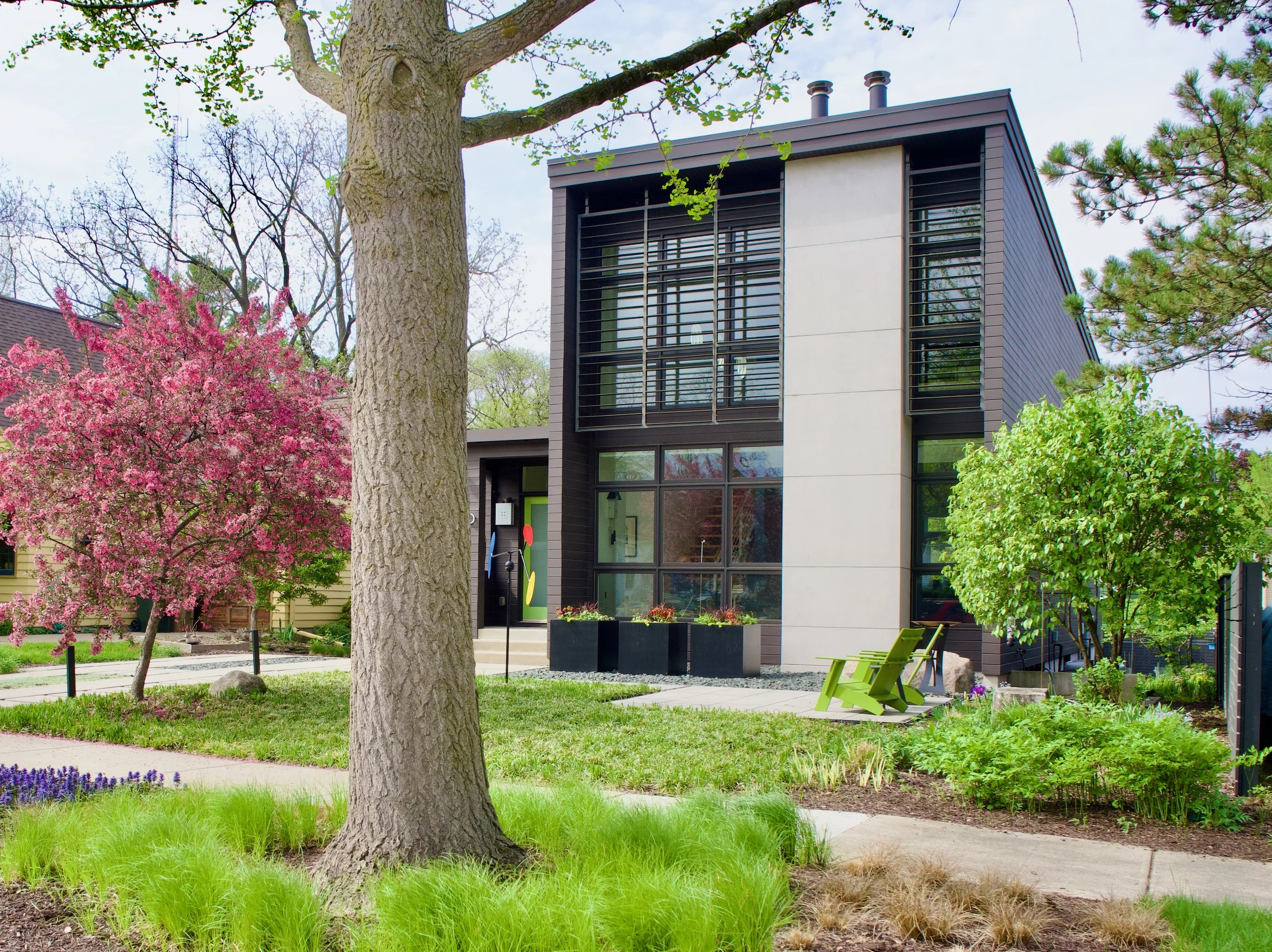Carol Richard
By; Tanya Richard
Carol never set out to become an architect. As one of the younger kids in her family, independence wasn’t just a choice—it was a necessity. She grew up in a time when careers for women were often predetermined: a nurse, a secretary, maybe a teacher. Architecture wasn’t on her radar, nor was it something young girls were encouraged to consider.
But in hindsight, the clues were always there.
Her mother, a skilled seamstress, taught Carol and her siblings to sew their own clothes. They would lay out patterns on fabric, but instead of following the prescribed yardage, Carol’s mother showed her a different way—turning the pieces, finding better alignments, making the most of every inch. It was an early lesson in spatial awareness, problem-solving, and efficiency. She didn’t know it then, but these small acts of ingenuity would later shape the way she thought about design.
The Road to the Unknown
After high school, Carol worked for three years before she and her sister packed up their 1964 Chrysler New Yorker—a massive white car they affectionately called “the White Pig”—and drove from Madison to Tucson, Arizona. Adventure was calling, and she was ready.
Her first job in Tucson? Sorting eggs. It wasn’t glamorous, but it was a start. Then, a friend planted a seed: “If you like math and art, why not consider architecture?”
That was the first time Carol had ever thought about it.
Intrigued, she enrolled at the University of Arizona. It was there that she met Judith Chafee, a formidable professor and trailblazer in the field. Judith was tough, exacting, and brilliant. She built stunning homes in the desert, seamlessly blending them into the rugged landscape. One day, after reviewing one of Carol’s projects, she gave her feedback that stuck with her forever:
"Carol, this is almost architecture."
That “almost” was a challenge. Carol was determined to close the gap.
A Winding Path to Purpose
In 1980, she earned her Bachelor of Architecture from the University of Arizona, a rigorous five-year professional degree. But even with a diploma in hand, she wasn’t entirely sure what came next. Instead of jumping into a firm, she took an unexpected detour—dealing blackjack at Harrah’s Casino in Lake Tahoe while figuring out her next move.
In 1982, fate (and family) led her to Atlanta. With the World’s Fair happening in Knoxville, Tennessee, she visited one of her sisters there before heading to see another in Georgia. On a whim, she walked into the AIA office in Atlanta, portfolio in hand, to see if any firms were hiring. A kind woman flipped through her 3-ring binder of listings and pointed her toward a firm called FABRAP.
“They’re a great firm,” she said. “And they’re hiring.”
They also happened to be just around the corner. Carol walked straight over, interviewed that day, and by the time the sun set, she had a job. And in a full-circle moment, she did get to experience the World’s Fair—because at FABRAP, she worked on the U.S. Pavilion for the Knoxville event.
From Architecture to Medicine—And Back Again
Carol worked as an architect for several years, but something wasn’t clicking. Then tragedy struck—her mother passed away from cancer. The loss changed everything. Architecture no longer seemed fulfilling, and she felt pulled toward something different: medicine.
She quit her job, enrolled at Georgia State University, and tackled the grueling prerequisites for medical school. To pay for her classes, she started a small architecture firm on the side, thinking it was just a temporary means to an end. But by the time she was ready to enter medical school, something surprising had happened.
She had fallen in love with running her own firm.
Instead of leaving architecture behind, she leaned in.
Building Something Bigger
Carol soon teamed up with Janice Wittschiebe, and together, they founded Richard + Wittschiebe, a woman-owned firm that blended their strengths perfectly. Janice was the marketing powerhouse, the outward face of the company, while Carol thrived behind the scenes—managing people, projects, and finances.
Their firm became known for its diversity, not just in its people but in the range of projects they took on. They built a culture where different personalities worked together, each piece fitting into the larger whole—just like those fabric patterns Carol had laid out as a child.
A Legacy in Design
Carol’s style has always leaned modern—clean lines, efficient layouts, and, most importantly, a thoughtful approach to how light transforms a space. Her passion for design and innovation has led to some remarkable achievements.
In 2010, she received the Future Landmark Award for Innovative New Design from the Madison Trust for Historic Preservation for her home on Ross Street—the first LEED Platinum House in Wisconsin. The following year, her firm, now Richard Wittschiebe Hand, won the 2011 AIA Georgia Firm of the Year Award. She also took great pride in the award-winning renovation of their office building on Simpson Street, recognized for its adaptive reuse.
In 2014, Richard Wittschiebe Hand merged with Stevens & Wilkinson, which merged with SSOE Group in 2021.
Carol’s path was anything but straightforward. She didn’t grow up dreaming of architecture. She nearly left the field entirely. But in the end, her story is proof that sometimes the best journeys are the ones you never planned.
And that “almost architecture” moment? She more than closed that gap. She built a legacy.



